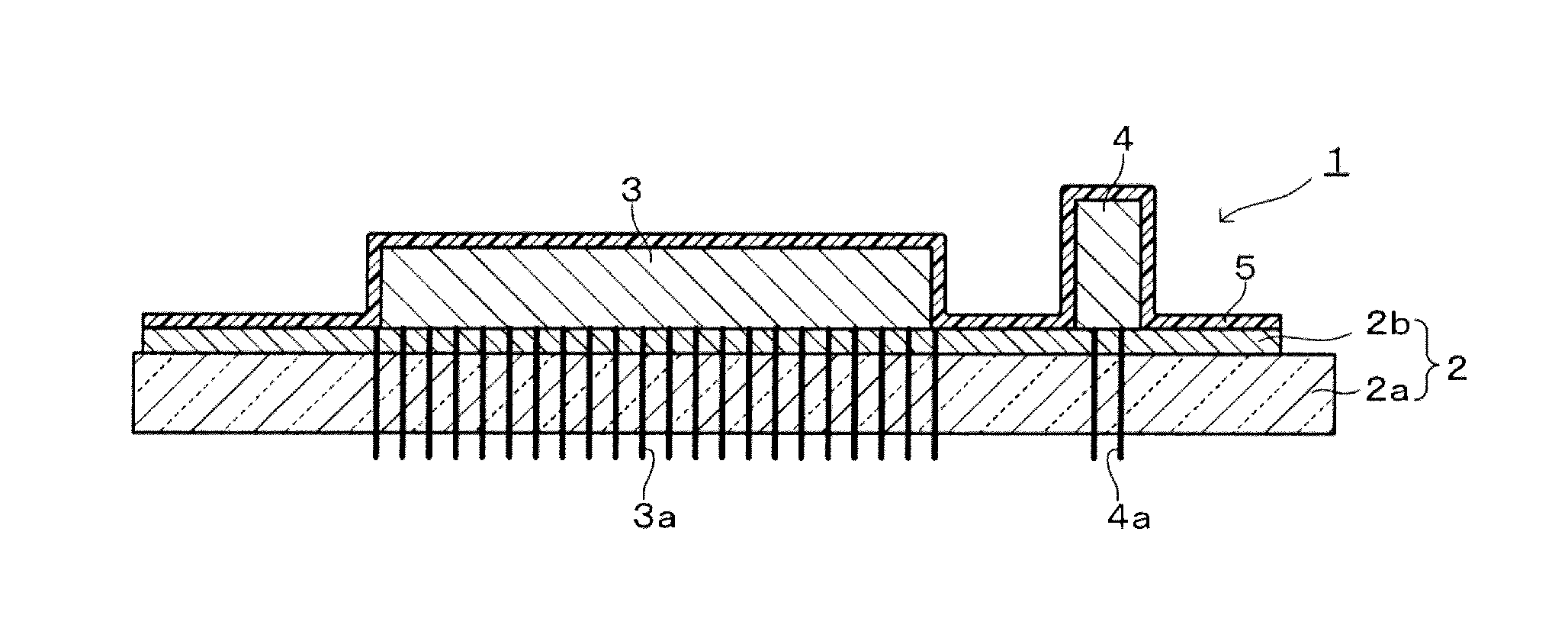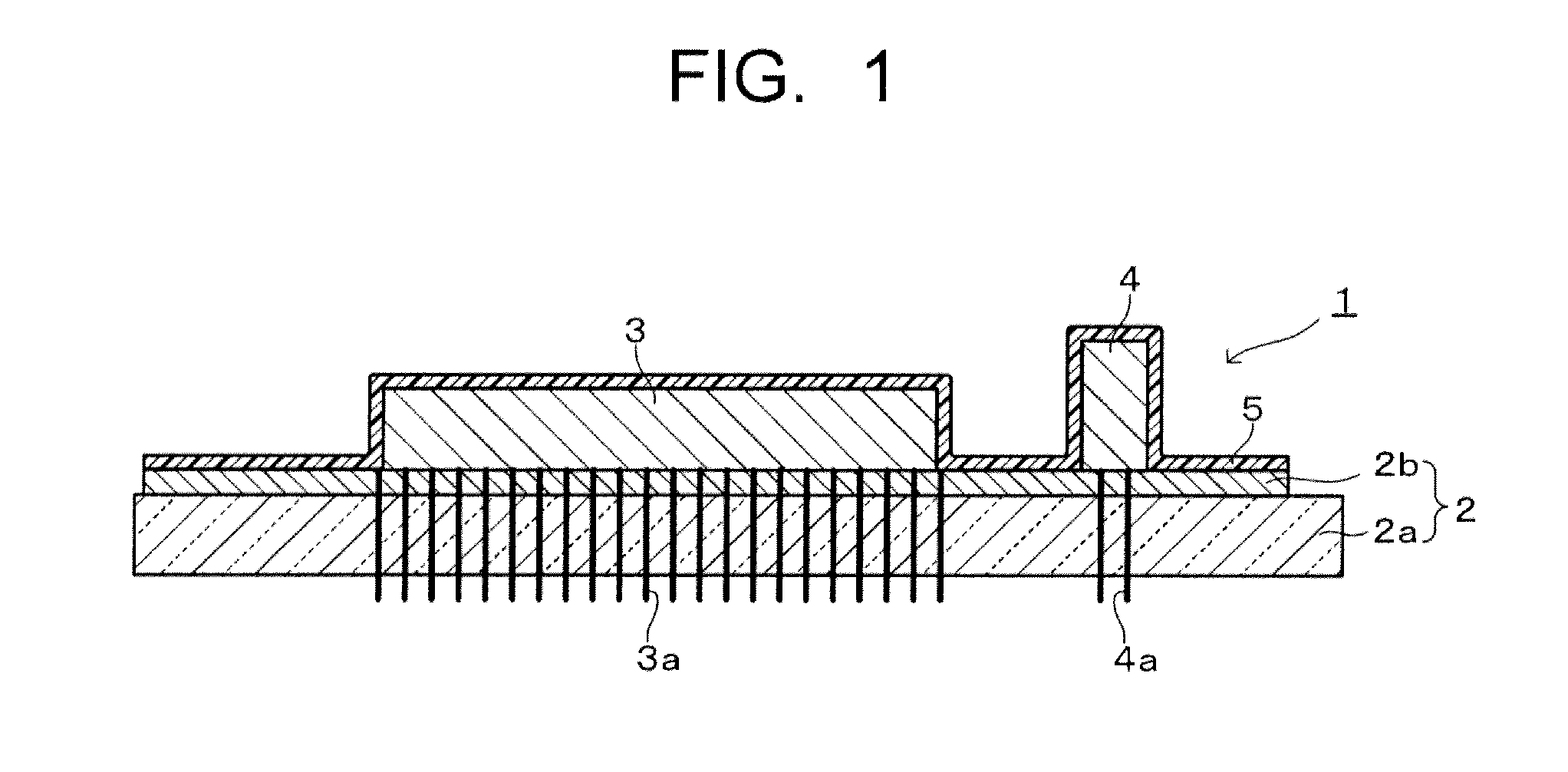Room-temperature-curable polyorganosiloxane composition and electric/electronic apparatus
a technology of polyorganosiloxane and composition, which is applied in the direction of transportation and packaging, coating, and association of printed circuit non-printed electric components, can solve the problems of low hardness of polyorganosiloxane composition, low hardness, and insufficient scratch strength such as scratch resistance, and achieves good coatability, high hardness, and low viscosity. good
- Summary
- Abstract
- Description
- Claims
- Application Information
AI Technical Summary
Benefits of technology
Problems solved by technology
Method used
Image
Examples
example 1
[0060]In 50 parts of (A1-1) polydimethylsiloxane having the both molecular ends blocked with methyldimethoxysilyl groups (viscosity; 0.013 Pa·s, the number of Si atoms in a molecule; 10), 50 parts of (A2-1) partial hydrolysis condensate (the number of Si atoms; 120) of a silane compound expressed by a formula: (CH3)Si(OCH3)3, 5 parts of (B-1) methyltrimethoxysilane, 2 parts of (C-1) diisopropoxy-bis(ethyl acetoacetate) titanium, and 0.2 parts of (E) 1,3,5-tris(N-trimethoxysilylpropyl) isocyanurate were compounded, and they were uniformly mixed in a moisture-free state, whereby a polyorganosiloxane composition was obtained.
example 2
[0061]In 40 parts of (A1-1) polydimethylsiloxane having the both molecular ends blocked with methyldimethoxysilyl groups (viscosity; 0.013 Pa·s, the number of Si atoms in a molecule; 10), 60 parts of (A2-2) partial hydrolysis condensate (the number of Si atoms: 70) of a silane compound expressed by a formula: (CH3)Si(OCH3)3, 30 parts of (D-1) polydimethylsiloxane having the both molecular ends blocked with methyldimethoxysilyl groups (viscosity; 0.09 Pa·s, the number of Si atoms in a molecule; 80), 6 parts of (B-1) methyltrimethoxysilane, 2 parts of (C-1) diisopropoxy-bis(ethyl acetoacetate) titanium, and 0.2 parts of (E) 1,3,5-tris(N-trimethoxysilylpropyl) isocyanurate were compounded, and they were mixed as in the example 1, whereby a polyorganosiloxane composition was obtained.
example 3
[0062]In 60 parts of (A1-1) polydimethylsiloxane having the both molecular ends blocked with methyldimethoxysilyl groups (viscosity; 0.013 Pa·s, the number of Si atoms in a molecule; 10), 40 parts of (A2-3) partial hydrolysis condensate (the number of Si atoms; 30) of a silane compound expressed by a formula: (CH3)Si(OCH3)3, 30 parts of (D-1) polydimethylsiloxane having the both molecular ends blocked with methyldimethoxysilyl groups (viscosity; 0.09 Pa·s, the number of Si atoms in a molecule; 80), 5 parts of (B-1) methyltrimethoxysilane, and 2 parts of (C-1) diisopropoxy-bis(ethyl acetoacetate) titanium were compounded, and they were mixed as in the example 1, whereby a polyorganosiloxane composition was obtained.
PUM
| Property | Measurement | Unit |
|---|---|---|
| temperature | aaaaa | aaaaa |
| mass | aaaaa | aaaaa |
| scratch resistance | aaaaa | aaaaa |
Abstract
Description
Claims
Application Information
 Login to View More
Login to View More - R&D
- Intellectual Property
- Life Sciences
- Materials
- Tech Scout
- Unparalleled Data Quality
- Higher Quality Content
- 60% Fewer Hallucinations
Browse by: Latest US Patents, China's latest patents, Technical Efficacy Thesaurus, Application Domain, Technology Topic, Popular Technical Reports.
© 2025 PatSnap. All rights reserved.Legal|Privacy policy|Modern Slavery Act Transparency Statement|Sitemap|About US| Contact US: help@patsnap.com



